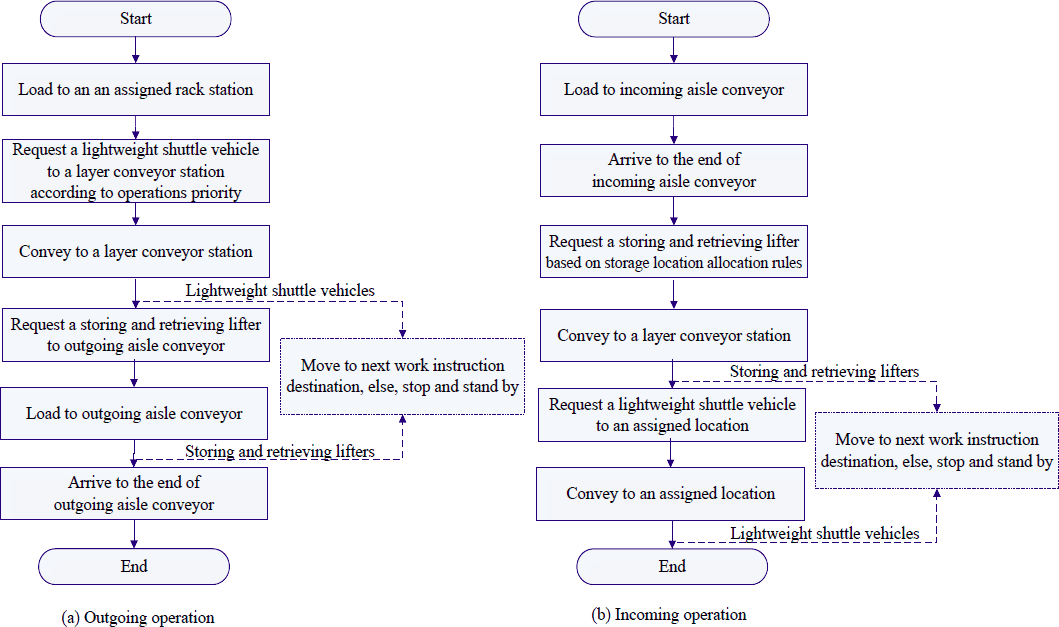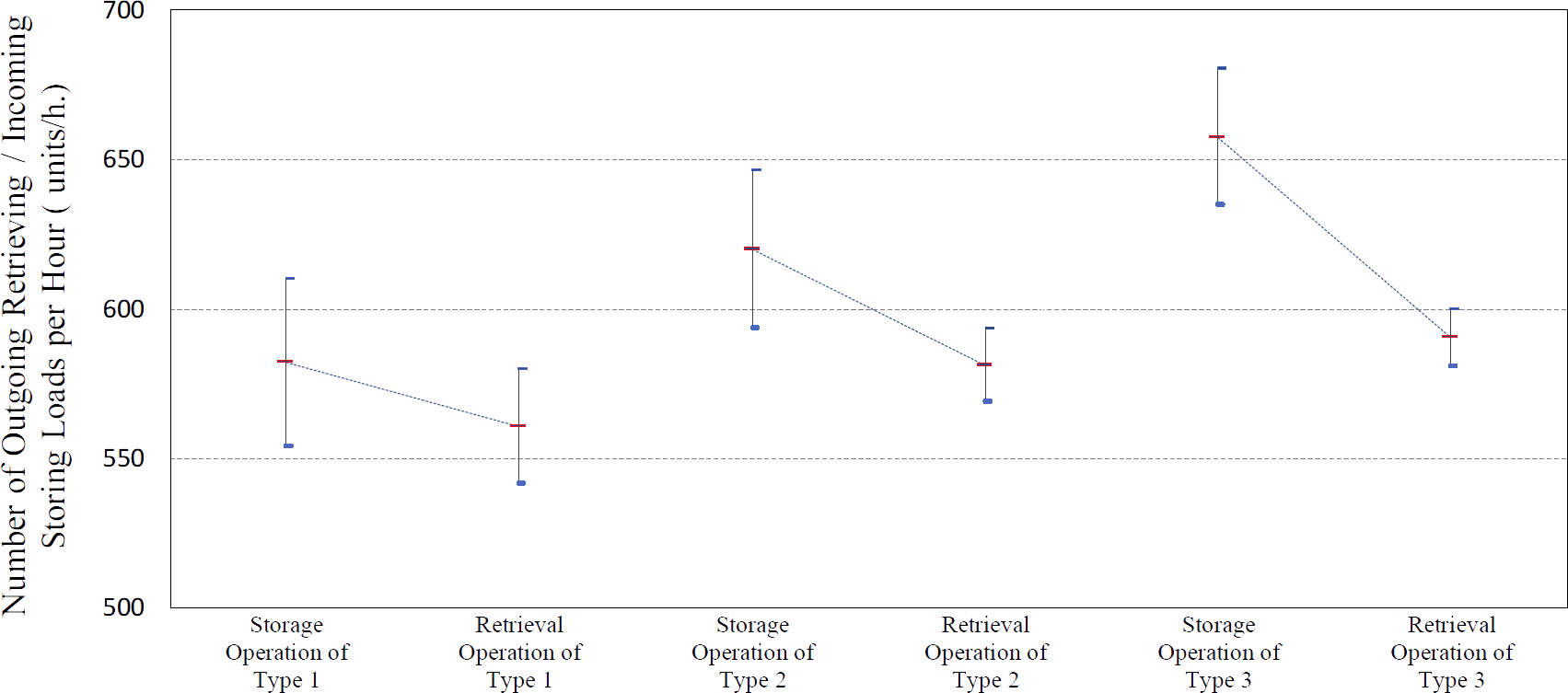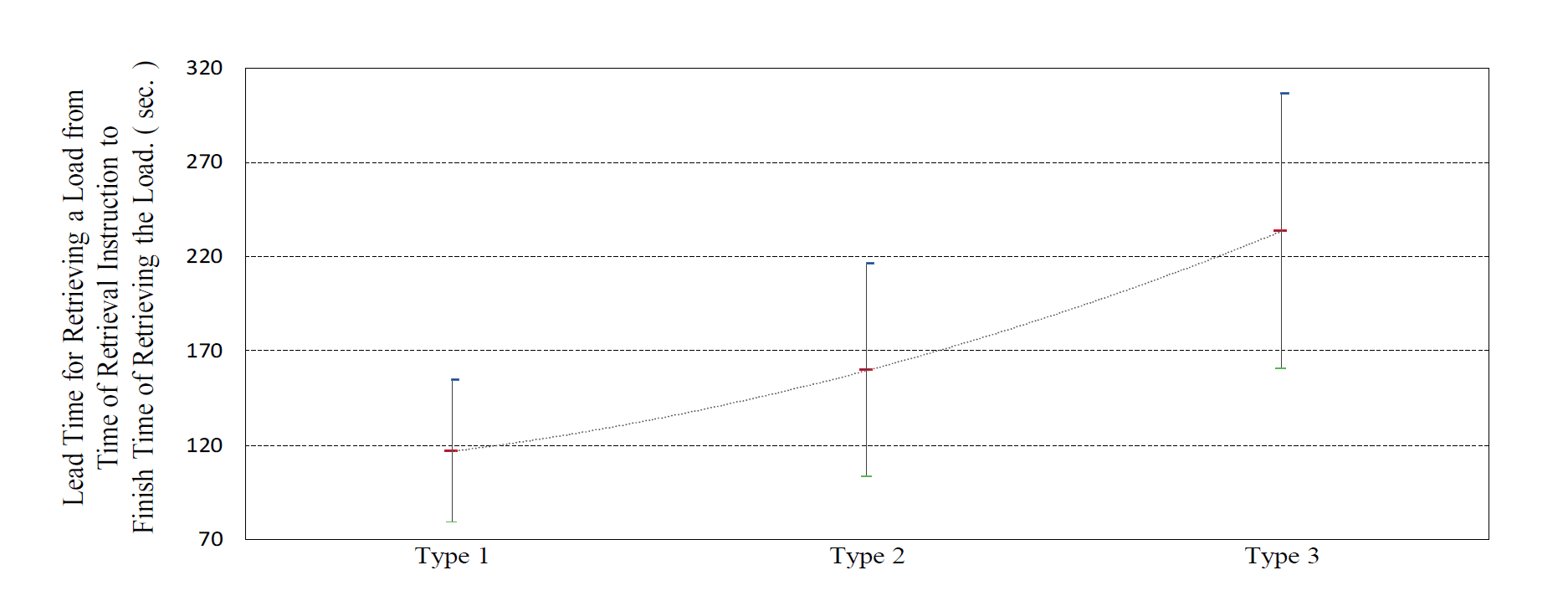by Rie Gaku (St. Andrew’s University) and Soemon Takakuwa (Chuo University)
As presented at the 2017 Winter Simulation Conference
Simulation models are proposed for modeling Shuttle Vehicle-type Mini-load storage and retrieval systems (SVM-AS/RSs). The SVM-AS/RS is a fast shuttle vehicle-type mini-load automated storage and retrieval system designed to provide for storage and sorting functions including inventory buffer before shipping, picking, assorting, palletizing, or merging. The systems considered in this study consist of lightweight shuttle vehicles installed on each level, storing and retrieving lifters, layer conveyors connecting lifters and shuttle vehicles, and incoming and outgoing aisle conveyors. To analyze its performance, simulation models are performed taking the relationships of the storage locations and load sequences into consideration. It is emphasized that AS/RS operations of the mini-load system can be confirmed by simulation experiments. In addition, the key performance indicators from the simulation analysis can be used to understand and validate its efficiency and effectiveness under different layouts.
Introduction
During the past two decades, the Business-to-Consumer e-commerce (BtoC-EC) market has become immense and is unprecedented. As varied forms of online marketing have been increasingly used by organizations, online marking is projected to have a major impact on both consumer behavior and logistics management. The sales figures of BtoC-EC recently soared to an annual total of 6.51 trillion yen, and its market scale has expanded for 17 consecutive years (Dentsusoken 2017). In the past decade, to enhance customers’ usability, the competition in fast shipping service based on specified delivery destinations and desired delivery times and dates has intensified in Japan’s e-commerce industry. Several suppliers, including Amazon Japan, Yodobashi, and Rakuten, have successfully provided faster delivery service within 3 hours after receipt of orders in their logistics operations to some areas of Japan to satisfy customers’ faster delivery service needs.
It should be emphasized that enhancing customers’ usability by shortening the lead time from the order of merchandise to final delivery to a user is an important element of supporting the competitiveness of e-commerce. In this environment, suppliers who do BtoC-EC business face many challenges in identifying which item should be retrieved, from which location, and how fast it should be shipped to customers to satisfy an online order.
Flexible storage and sorting response functions are required in logistics operations of e-commerce business to satisfy customers’ faster delivery service needs. Flexible storage and sorting functions include inventory buffers before shipping, picking, sorting, and palletizing or merging of cartons, totes, and trays by group or specified sequence. However, performance analysis of an automated storage and retrieval system (AS/RS) is a complex issue to logistics managers in an dynamic BtoC-EC environment.
Simulations have traditionally been used as a decision-making tool for logistics operations to ensure continuous operations are maintained. Many studies focus on simulation modeling for large-scale AS/RS operations. It has been necessary to model and perform simulation experiments so as to analyze and compare possible alternatives of an AS/RS (Takakuwa 1989; Takakuwa 1994; Takakuwa 1995). A cost- effectiveness optimization analysis of an actual looped-truck automated guided vehicle (AGV) system was performed using a simulation to develop policies and examine operational specifications (Takakuwa 1993). Takakuwa (1996) presented a module-based modeling method for generating simulation programs for complex and large-scale AS/RS-AGV systems.
Several studies described unit load AVS/RSs to design and analyze the performance of logistics operations. Hu et al. (2005) used simulation to validate the optimal design of a rectangular-in-time AS/RS rack taking the stay dwell point policy into consideration. A computationally efficient cycle time model for unit load AVS/RSs using autonomous vehicle technology was presented to estimate vehicle utilization where the objective was to specify the range of design profiles warranting more extensive simulation- based evaluation and validation (Kuo et al. 2007). Goozen et al. (2016) developed scheduling heuristics to assign tasks to shuttles with the goal of minimizing the number of out-of-sequence occurrences and maximizing the throughput capacity of a full roaming-shuttle system (FRS). The FRS has been deemed suitable for slow-moving products in retail and wholesale distribution centers. In this paper, a simulation model is proposed for modeling a fast Shuttle Vehicle-type Mini-load AS/RS system (SVM-AS/RS). The SVM-AS/RSs are designed to provide storage and sorting functions including inventory buffer before shipping, picking, assorting, palletizing, or merging to handle cartons, totes, and trays by group or a certain sequence. The simulation models differed from the above-mentioned studies because the simulation modeling was designed to specifically consider storage location and load sequence allocation. A novel solution for supporting fast mini-load AS/RS operations for an e-commerce business based on time units of hours and seconds is used as the means of confirming the effectiveness of the SVM-AS/RSs.
Shuttle Vehicle-Type Mini-Load AS/RS System
A general view of the SVM-AS/RSs is shown in Figure1. The SVM-AS/RSs considered in this study consist of various subsystems including lightweight shuttle vehicles installed on every level, storing and retrieving lifters, layer conveyors connecting lifters and shuttle vehicles, and incoming and outgoing aisle conveyors. Storage and retrievals are performed to/from the racks by lightweight shuttle vehicles that can move only in horizontal direction. The racks are linked to the storing and retrieving lifters through the layer conveyors. Outgoing aisle conveyors are linked to the checking and packing area.

Operation Flow of SVM-AS/RSs
Every incoming mini-load is first moved onto an incoming aisle conveyor and then picked by a storing and retrieving lifter before being placed on a layer conveyor. Next, the mini-load is moved to its destination rack by a lightweight shuttle vehicle. Alternately, an outgoing mini-load is picked from its rack in the system by a lightweight shuttle vehicle, then transferred to the outgoing aisle conveyor through a layer conveyor, and finally onto a storing and retrieving lifter.
Lightweight shuttle vehicles as well as storing and retrieving lifters can be handled in accordance with operations priority and urgency. For retrieving operations, an urgent load comprised of a load of high-priority storage is given preferential treatment over low-priority loads. Similarly, if storage operations have a higher priority, then retrieving operations, storing using lightweight shuttle vehicles will have priority over retrievals; otherwise, the operations alternate between retrieval and storage operations cyclically.
In general, there are two picking methods in terms of schematic operation flows: the relay picking method and the parallel picking and palletizing method. There are not any arranging and sorting operations for processing the associated orders in the relay picking method. Hence, the relay picking method is considered to be more suitable for fast-moving products in BtoC-EC logistics environment. In this study, the SVM-AS/RSs adopt the relay picking method to perform storage and sorting functions before any required shipping, picking, assorting, palletizing, or merging operations.

Storage Locations Allocation Rules for Incoming and Outgoing Loads
To meet fast AS/RS service expectations based on time units of hours and seconds, storage-location allocation rules based on inbound and outbound frequency rates become an interesting challenge to resolve in logistics operations of e-commerce business. Two general storage-location allocation rules are considered in order to smooth AS/RS operations and to support fast and efficient operations of the SVM- AS/RSs.
The first rule is called the “Priority Allocation Rule” shown in Figure 3. In the event outgoing operations are concentrated around a certain time, the storage locations close to the layer conveyors are allocated and prioritized for the incoming loads to minimize the operation time of outgoing operations. Otherwise, storage locations are randomly assigned from the available locations among the various levels; this rule is called the “Random Allocation Rule Based on Level Balance.”

Procedures
Computer simulation is a method that can be used to describe, analyze, and predict the performance of a complex system without limiting assumptions. The objective of this study is to propose procedures that take the relationships of the storage locations and load sequences into consideration. As shown in Figure 4, the procedures to validate and improve the AS/RS operations of SVM-AS/RSs are detailed as follows:

[Step 1] Collect and input the layout information including the number of levels, bays and banks, as described in Section 4.2.
[Step 2] Select assignment methods for the schedules of lightweight shuttle vehicles. [Step 3] Select or modify a storage-location allocation rule in the simulation model.
[Step 4] Perform a simulation model to observe the AS/RS operations of the SVM-AS/RSs. [Step 5] Obtain simulation results for simulation experiments.
[Step 6] If the result of KPIs from the simulation analysis is acceptable, terminate the procedure.
Otherwise, return to Step 1, 2 or 3 and adjust the data and parameters required for Step 4.
It is emphasized that the procedures proposed in this study can help logistics managers understand and validate AS/RS operations in a dynamic BtoC-EC environment, thereby confirming and improving the effectiveness of AS/RS operations that involve mini-loads under different layouts.




